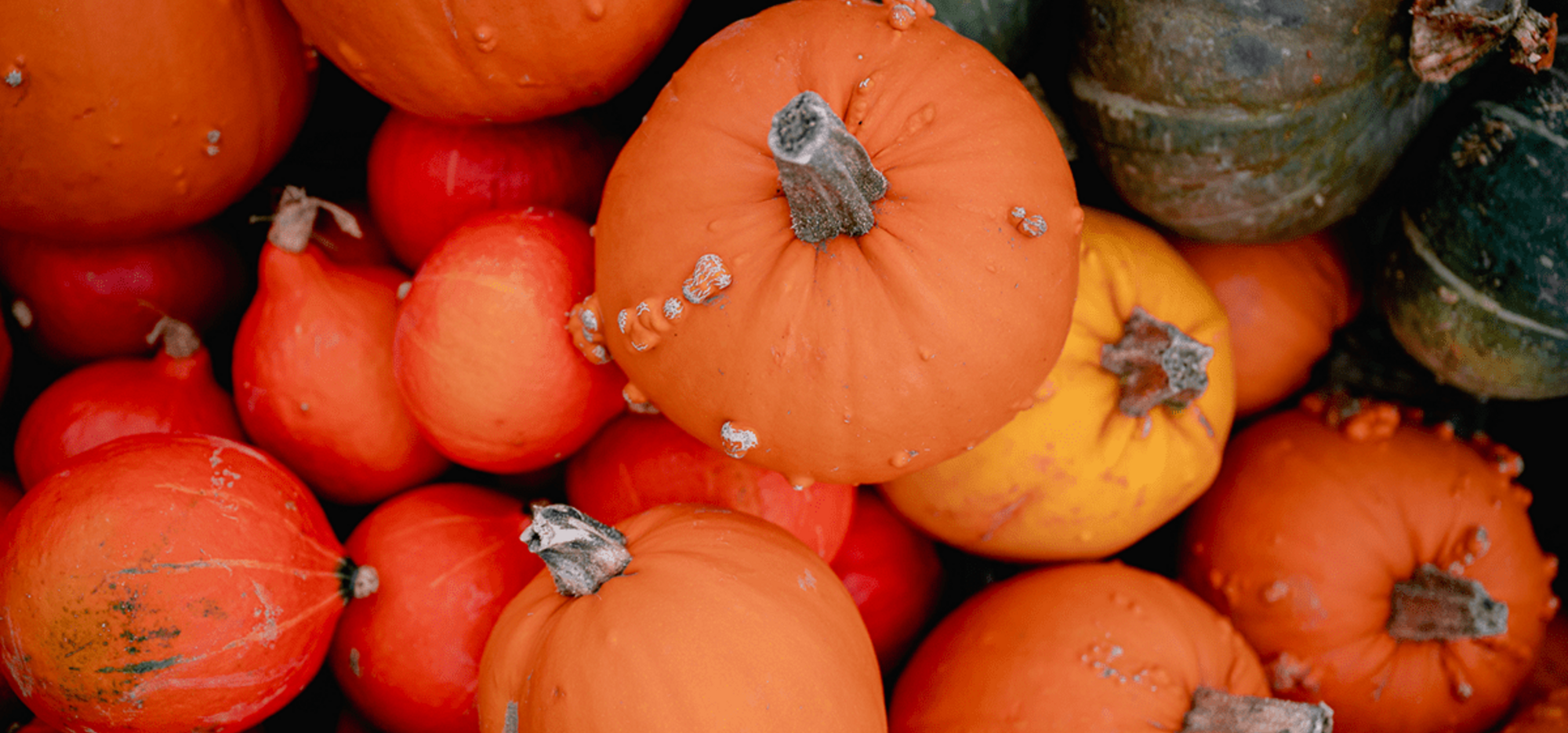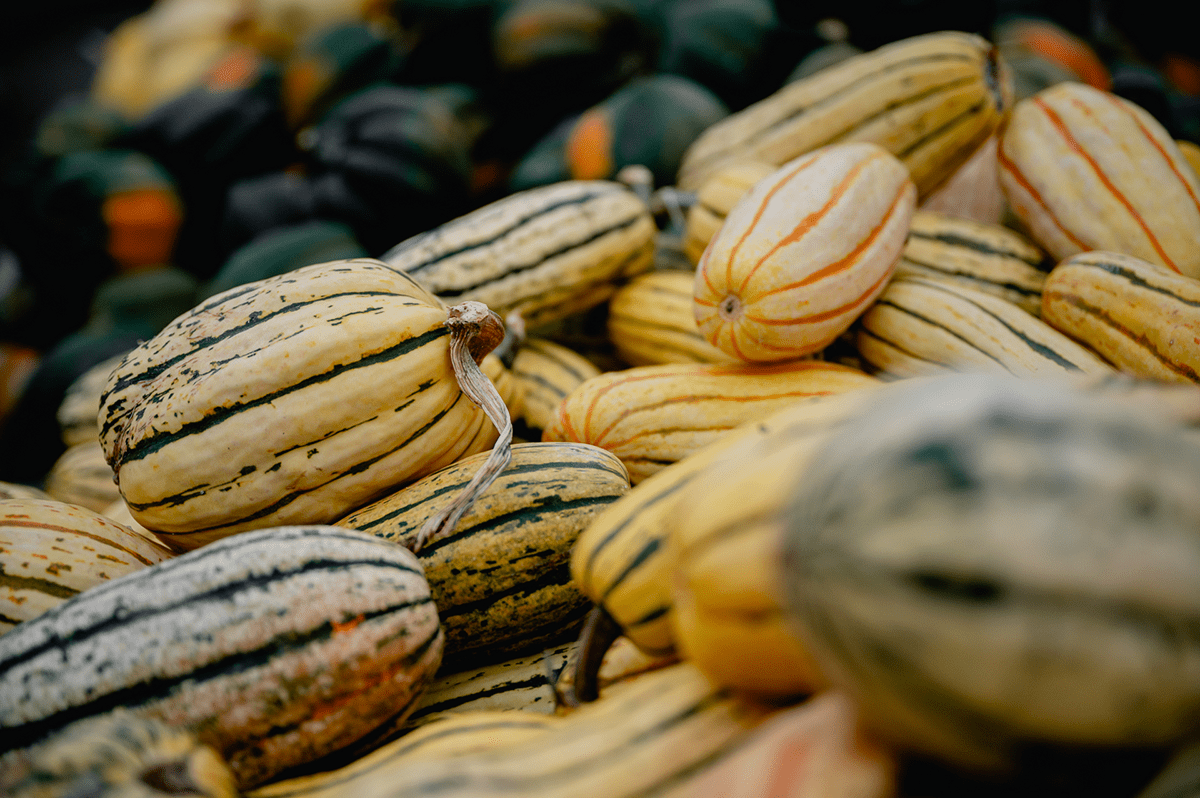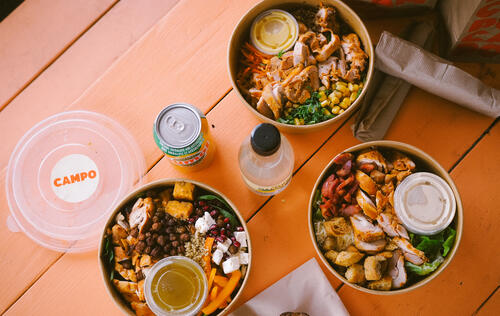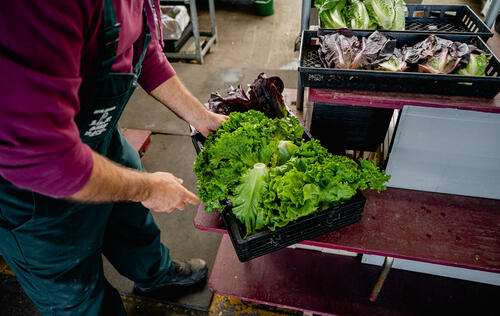Squash and pumpkins: the stars of autumn

In autumn, squash fill our market stalls, attracting the eye with their shapes and colours. One of them stands out from the rest: the pumpkin.
A symbol of Halloween, the pumpkin was already cultivated on our territory by the First Nations peoples 8,000 years ago. When Jacques Cartier visited Quebec for the first time, he was astonished to find fields full of this unknown fruit, which he thought was a melon. Not quite, Mr Cartier!
Although pumpkins have long been eaten, their transformation into carving material is a relatively recent phenomenon. The custom originated in Ireland, where turnips were turned into lanterns on All Hallows' Eve. With the arrival of large numbers of Irish immigrants in the 19th century, the practice was adapted: there were no turnips to be found in North America, so they turned to their cousin, the pumpkin. Contrary to popular belief, Halloween is not a festival of American origin, but an Irish festival that has adapted to its new host country.
In Quebec, it was mainly as a result of the influence of American television that the craze for carved pumpkins - and Halloween too! - developed in the 1960s.
Squash and pumpkins in the kitchen
Beyond their decorative appeal, pumpkins and squash are excellent foods to invite into the kitchen. We love their flesh, but also their seeds, which are excellent as a snack. Discover 5 types of squash and different ways to prepare them.
PUMPKIN
Once Halloween is over, it's time to turn to pumpkin to make a puree that can be added to a variety of recipes. Here's how to make your own pumpkin puree:
- Cut the pumpkin in half and remove the seeds. Set the seeds aside.
- Bake the pumpkin at 375°F (190°C) for one hour, or until tender. The flesh will become soft and it will be easy to remove the skin.
- Finally, put the flesh in a blender.
- That's it! Your pumpkin purée is ready. Roast your pumpkin seeds in the oven with canola oil and salt at 375°F (190°C) for 10 minutes. No waste: you'll be able to devour the whole pumpkin.
Pumpkin can be added to muffin recipes, sweet breads, biscuits and the famous pumpkin pie. Pumpkin puree freezes well. We like to freeze it in one-cup portions, which are easy to add to recipes.
Try the Pumpkin Apricot cookies

Squash: an autumn pleasure
For many, preparing squash remains a mystery. This hassle limits many people's desire to eat squash. With these tips and tricks, you'll now know how to prepare your squash. You won't just use them for decoration anymore!
Butternut squash
You may know butternut squash by one of its many names: doubeurre, peanut squash (because of its shape) or butternut squash. Butternut squash is unusual in that it has a subtle nutty flavour that is much appreciated.
Butternut can be used in a wide range of recipes. As a meal, it can be added to stews, couscous and gratins. It can also be used as a dessert in tarts, muffins, cakes and biscuits. But the most common and popular way to cook it is in soups and cream soups.
Try the butternut squash soup with cider
Spaghetti squash
With its light yellow skin, spaghetti squash lives up to its name. When cooked, the flesh separates into long strands, resembling spaghetti! As you can see, this squash can easily replace pasta in a recipe.
Here's the easiest way to cook your spaghetti squash:
- Cut squash in half lengthwise. Remove seeds and filaments from center.
- Brush both halves with olive oil. Season with salt and pepper.
- Bake for 45 minutes at 375°F (190°C) on a parchment-lined baking sheet. Place squash upside down (flesh side down).
- Once cooked, scrape the inside of the squash with a fork to remove the flesh, which will break off in strands.
- Once you've got your spaghetti squash strands, add your homemade spaghetti sauce, white chicken sauce or seafood sauce. Be creative!
Delicata squash
Are you a fan of French fries? Delicata squash is the squash you've got to try! This cream-colored squash with dark green stripes has firm, orange flesh reminiscent of sweet potatoes. Unlike other winter squashes, it has a thin, edible skin. This makes it easier to prepare than many other squashes.
Here's a simple recipe for making good French fries:
- Cut delicata squash in half lengthwise. Remove all seeds and filaments. Cut each half into sticks.
- In a large bowl, combine a little olive oil (3 tbsp. - 45 ml), fresh or dried rosemary (1 tbsp. - 15 ml) and salt (to taste). Add squash fries and mix well.
- Place fries on a parchment-lined baking sheet.
- Bake at 350°F (175°C) for 20 to 30 minutes.
- Bring to a broil for a few minutes, just long enough to toast the fries a little.
And that's it! You've got delicious fries to accompany your next meal
Carnival squash
Although this squash offers us a veritable carnival of colors, with its brightly colored skin ranging from red, white and cream to orange and green, it's Carnival squash (with an “i”!). Its aromas are reminiscent of hazelnuts, butter and even hints of maple syrup. We love this squash puréed to accompany meats such as pork or lamb, or in a squash risotto.
To enjoy the flesh of Carnival squash, you can use the same cooking technique as for pumpkin.




